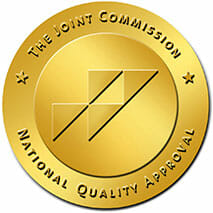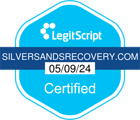Red Flags for Heroin Use
Heroin is an opioid that is made from morphine. Between 2017 and 2022, there were more than 85,000 suspected opioid overdoses in Arizona and more than 11,700 suspected opioid deaths.1 Heroin and other opioids account for about 70% of overdose deaths in Arizona.2 Nationwide opioid deaths continued rising after the pandemic started, with nearly 25,000 more deaths in 2021 than in 2020.3 If you know someone who may be using heroin, it helps to know the red-flag signs of heroin addiction. It also helps to know heroin addiction treatment options.
Signs of Heroin Addiction
Addiction starts when someone cannot stop taking a substance even if the person knows its dangers. Heroin and other opioids are especially addictive because they trigger endorphin release, creating pleasurable feelings.4 When the drug wears off, the person wants more. Over time, continued opioid use leads to less production of endorphins, and it takes a higher dose to achieve the same effect.
If the person does not have the drug, unpleasant withdrawal symptoms start. Addiction alters the person’s brain chemistry, which leads to behavioral changes.5 These are some potential signs that someone you know may have a heroin addiction:
- Constricted pupils and flushed skin.
- New confusion, disorientation, or memory loss.
- Difficulty making decisions and making poor or irrational decisions.
- Acting secretive and withdrawing from social interactions.
- Poorer performance at work or school.
- Appearing tired or lethargic most of the time.
- Needle marks on arms.
- Mood swings or quick behavior changes.
- New legal or financial problems.
- Participating in high-risk behaviors.
- Change in appearance or lack of hygiene.
You may also find needles or other drug paraphernalia if the person lives with you. A person with an addiction may not show all of these signs, so it can be harder for colleagues or friends to notice. For example, some people are higher functioning and may take special care to maintain their appearance. Also, they may still show up to work or social events. If someone makes a strong effort to hide the addiction, it can be harder to detect a problem.
How To Help Someone With an Opioid Addiction
Heroin addiction is hazardous because opioids slow respirations and heartbeat, potentially leading to a life-threatening overdose. If the person lives with you, one vital step to take while trying to get that person to seek help is to obtain naloxone. It is a substance that quickly reverses opioid effects.
Under Arizona law, anyone may distribute naloxone nasal spray to someone experiencing an opioid overdose.6 Talk to a pharmacy about obtaining it to prepare for a potential emergency.
Naloxone might save their life, but the underlying addiction will persist. To treat the root of the problem, the person needs heroin addiction treatment. This could involve working with an interventionist to plan an intervention or reaching out to a treatment facility for guidance.
Heroin Addiction Treatment Options
At Silver Sands Recovery, we help people starting their recovery journey learn how to beat addiction. Our addiction therapy programs are holistic, focusing on treating mind, body, and spirit. We help people understand the reasons for their behavior and how to deal with triggers or cravings.
Many people who have a heroin addiction also have an underlying mental health issue. For this reason, we also offer dual diagnosis treatment, which addresses both problems simultaneously. Without treatment for both conditions, a person is more likely to relapse.
Exercise is also good for people who are starting recovery from heroin addiction. It helps stimulate endorphin production naturally and can be a good way for people in recovery to develop a healthier habit for feeling good.
Additionally, we introduce people to 12-step meetings. These are peer support meetings with others who struggle with substance addiction. As people learn how to communicate and support their peers, they grow personally. 12-step meetings are valuable after the treatment program ends, providing essential support for an individual to stay in recovery.
Finding Heroin Addiction Treatment in Arizona
If someone you know may be addicted to heroin, Silver Sands Recovery in Prescott, Arizona can help. We offer holistic therapy, exercise programs, dual diagnosis treatment, 12-step therapy, and more. We’re happy to answer any questions you may have and explain how our treatments help people learn tools to help overcome addiction. Please contact us to learn more about heroin addiction treatment.
Sources:
[1] https://www.azdhs.gov/prevention/womens-childrens-health/injury-prevention/opioid-prevention/index.php
[2] https://www.drugabuse.gov/drug-topics/opioids/opioid-summaries-by-state/arizona-opioid-involved-deaths-related-harms
[3] https://www.cdc.gov/nchs/nvss/vsrr/drug-overdose-data.htm
[4] https://www.mayoclinic.org/diseases-conditions/prescription-drug-abuse/in-depth/how-opioid-addiction-occurs/art-20360372
[5] https://www.healthline.com/health/signs-heroin-addiction
[6] https://azdhs.gov/documents/prevention/womens-childrens-health/injury-prevention/opioid-prevention/opioid-naloxone-faq.pdf
About the author:

Lisa Waknin is the Founder and Director of Silver Sands Recovery, located in Prescott, Arizona. Lisa started Silver Sands Recovery after immersing herself in the addiction treatment world for several years to figure out what could be done differently to help her daughter and others like her to overcome addiction and stay sober. She believes in a hands-on treatment approach, which includes taking someone out of their environment, providing a 90-day program in a structured environment. During treatment, clients not only recover physically but also learn to live their life again. Lisa is a sought-after expert speaker for recovery support groups, charities, schools, communities, and companies wanting to educate themselves on the explosion of opiate and heroin abuse in our country and the best way to understand, treat, and beat it.





